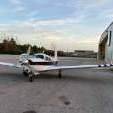does your mechanic test fly your airplane after annual?
-
Members Online
- 47U
- DonMuncy
- Niko182
- Sherifferic
- EricJ
- Brian2034
- N177MC
- Pinecone
- acekng1
- John Car
- georgewdean1020
- Ryan ORL
- Mellow_Mooney
- HRM
- dkkim73
- LANCECASPER
- Shadrach
- skydvrboy
- markgrue
- Terraplane
- daytonabch04
- PhateX1337
- ElkoRandy20J
- IvanP
- phrogpilot73
- ElderWhitehead1
- Lois
- Stetson20
- Planegary
- Tim-37419
- FLYFST
- TheAv8r
- LOCOLJ
- richardbrochu27
- 802flyer
- TCC
- Stubby
- PeterB
- McMooney
- Jaystew324


Recommended Posts
Join the conversation
You can post now and register later. If you have an account, sign in now to post with your account.